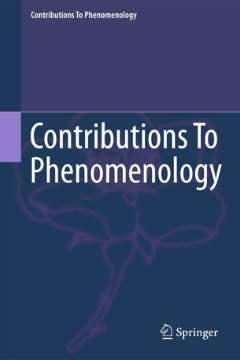Repository | Book | Chapter

(1999) Phenomenology, Dordrecht, Springer.
In the De Anima, Aristotle defines the soul ( ( psi upsilon chi mathop eta limits^prime ) ) as the form and actuality ( ( mathop varepsilon limits^, u au varepsilon lambda mathop varepsilon limits^prime chi varepsilon iota alpha ) ) of a natural body capable of life, namely an organism. The.ensouled body or living being is a real entity ( ( { ext{o}}mathop u limits^prime sigma mathop iota limits^prime alpha ) ), in the special sense of being a composite of matter and form, potentiality and actuality, whereas the soul, in its intrinsic being, is pure ( mathop varepsilon limits^, u au varepsilon lambda mathop varepsilon limits^prime chi varepsilon iota alpha ) . Aristotle hastens to point out, however, that actuality or ( mathop varepsilon limits^, u au varepsilon lambda mathop varepsilon limits^prime chi varepsilon iota alpha ) must here be taken in its "first" rather than "second" sense: The ensouled body is actualized matter in that it possesses the power to carry out its proper life functions; but the actual possession of these powers (constituting a "first actuality") is not equivalent to their actual exercise (or "second actuality").1
Publication details
DOI: 10.1007/978-94-017-2610-8_3
Full citation:
Fóti, V. (1999)., Merleau-Ponty's vertical genesis and the aristotelian powers of the soul, in B. C. Hopkins (ed.), Phenomenology, Dordrecht, Springer, pp. 39-58.
This document is unfortunately not available for download at the moment.



